News
Top Six Most Powerful Air Forces in Muslim-Majority Countries: Assessing Fleet Strengths From Algeria to Pakistan
Muslim-majority countries have been at the centre of many of the world’s major conflicts since early years of the Cold War, from the Middle East and North Africa where over a dozen major wars have been waged to South Asia where Pakistani and Indian forces have clashed multiple times. Air power has played a key role in many of these conflicts leading multiple Muslim-majority countries to build up major fleets during the Cold War, from Iran which cooperated with the United States to bolster its power on the Soviet Union’s borders, to Algeria and Libya which build formidable fleets with Soviet support facing NATO along its southern flank. Although many of the Islamic World’s major air forces have seen their standings diminished significantly since the heights of their power in the Cold War, most notably Iraq and Libya following Western assaults, Iran and Syria due to reduced defence spending and Egypt due to major political constraints, a number of countries continue to field highly potent aerial warfare capabilities. The disintegration of the Soviet Union also saw six new Muslim-majority states formed all of which inherited significant arsenals from Soviet era, with Kazakhstan, Uzbekistan and Turkmenistan in particular having sustained formidable aerial warfare capabilities in to the 21st century. Muslim majority states have had varying reasons for sustaining high end aerial warfare capabilities, from Pakistan’s ongoing territorial disputes with India to Algeria’s perception of a threat of NATO attacks, with the majority of leading air forces among Muslim countries having financed modern militaries using their fossil fuel export profiles. An assessment of the six Muslim majority countries with the most formidable aerial warfare capabilities is given below:

Algeria
The Algerian Armed Forces have strongly prioritised modernising their aerial warfare capabilities since the NATO assault against neighbouring Libya in 2011, which made it critical to deter possible similar Western attacks. Algeria was a leading air power in Africa during the Cold War particularly in the conflict’s latter years, with the country acquiring the top Soviet combat jet for air to air combat the MiG-25 Foxbat which played a key role in its confrontations with the Israeli Air Force during the 1980s allowing it to deter strikes by Israeli F-15s. The fleet’s capabilities would be revolutionised from the mid 2000s, however, and at a fast accelerated rate from the mid 2010s, with the Western threat seen to remain high into the 2020s. Over 70 Su-30MKA heavyweight form the backbone of the fleet today, and is a heavily enhanced derivative of the Soviet Union’s top fighter the Su-27 integrating technologies from the cancelled Su-27M and Su-37 air superiority fighters including thrust vectoring engines for extreme manoeuvrability and a N-O11M phased array radar. The aircraft was evaluated against the French Rafale in the mid 2000s, and despite its much higher operational costs and maintenance needs it was favoured due to its superior performance across the spectrum of capabilities ranging from endurance and sensors to armaments and flight performance. The first orders were placed in 2006.
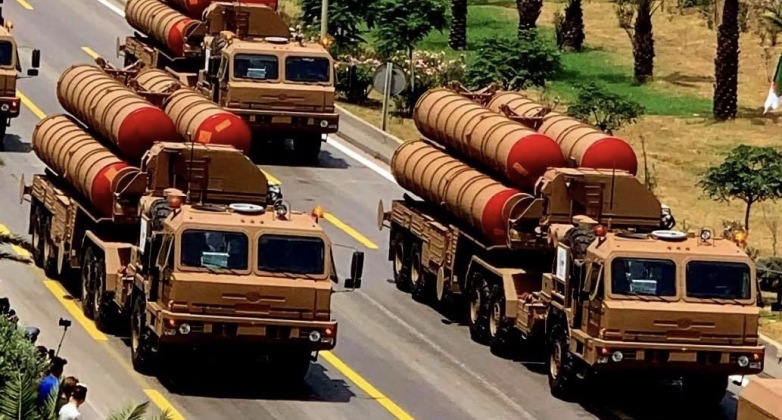
Geographically isolated from friendly states with any significant aerial warfare capabilities, Algeria has invested heavily to develop what is by far Africa and the Arab World’s most expansive ground based air defence network built around Russian S-300PMU-2 and reportedly S-400 long range systems. These are supported by a range of complementary shorter range assets. One of the latest additions to this has been the Chinese CHL-906 electronic warfare system, while for Russian assets Algeria has often been able to acquire new hardware simultaneously or before the Russian Armed Forces themselves. Complementing its Su-30MKAs, Algeria fields cheaper but similarly advanced MiG-29M fighters which are the most capable variants of the MiG-29 ever developed, as well as multiple large squadrons of Su-24M strike fighters which are expected to be replaced in the near future. These assets between them make the country a very tough target for any potential Western attack despite the disadvantage of geographic proximity to Europe, and despite the destabilisation of neighbouring Libya which was previously a valued security partner. A $7 billion Russian-Algerian arms deal reportedly signed in 2021 is speculated to include upgrades for the Su-30 fleet and the country’s first Su-57 fifth generation fighters, with the Algerian Air Force expected to continue to acquire the most advanced Russian hardware available.
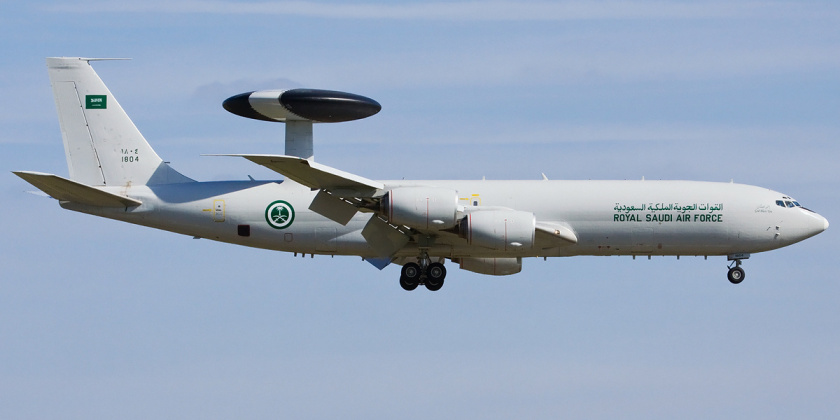
Saudi Arabia
The Royal Saudi Air Force is among the most well funded air services in the world, and having been among the first to receive fourth generation fighters in the 1980s it has continued to gain priority access to top end American hardware. The backbone of the fleet is comprised of F-15 fighters, with Saudi orders in the early 2010s financing a revolutionising of the old Cold War era jet’s capabilities to produce the heavily enhanced F-15SA variant. With an AESA radar and state of the art avionics and weaponry, the improved F-15 was so capable that its derivatives would eventually compete with F-35 fifth generation fighter for contracts to arm the U.S. Air Force – which had previously planned to end F-15 acquisitions entirely after 2001. Less impressive are the country’s two European fighter classes the Eurofighter and Tornado, both of which Saudi Air Force senior officials have widely acknowledged were purchased for political reasons rather than due to merit or cost effectiveness. Both classes rely on dated avionics and weaponry and obsolete mechanically scanned radars. While formidable in its assets, the service has been flagged by a training issues and major discrepancies between the quantities of aircraft purchased and the number of pilots available. Its E-3 airborne early warning and control aircraft, although state of the art when acquired in the 1980s, are increasingly considered obsolete today and suffer from from diminishing availability rates which has also undermined situational awareness over the country’s vast territory.

Kazakhstan
The Kazakh Air Force has stood out in Central Asia not only for the significant quantities of high end Soviet weapons systems it inherited in 1991, but also for its continued major acquisitions of advanced assets from neighbouring Russia and its high training levels. This has made it by far the most capable service in the region – and likely more capable than all other Central Asian fleets combined. The backbone of the fleet is formed by 32 MiG-31 interceptors split between two squadrons, which are the heaviest combat jets capable of air to air combat fielded anywhere in the world and are deployed by Russia and Kazakhstan exclusively. With very high endurances and by far the world’s largest radars for a fighter/interceptor class, the Foxhounds have been modernised to the MiG-31BM standard making them world leading assets – the value of which has recently been demonstrated by the Russian Air Force in Ukraine utilising the class’ massive R-37M air to air missiles. Alongside the MiG-31 Kazakhstan deploys to other very long range heavyweight fighter classes, including the Su-27 and the recently acquired Su-30SM both of which were acquired from Russia after the Soviet Union’s disintegration, with approximately 48 airframes in service. This provides Kazakhstan with a fleet of approximately 80 heavyweight aircraft optimised for air to air combat, supplemented by medium weight MiG-29s and a formidable if somewhat dated surface to air missile network built around the S-300, S-200, BuK-M2 and other Russian and Soviet designs.
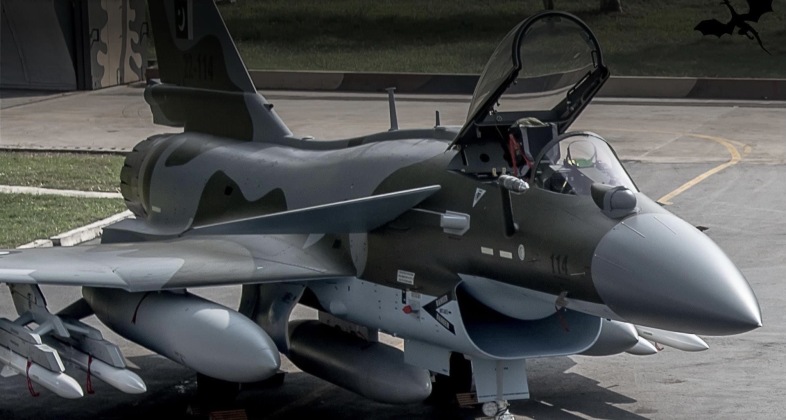
Pakistan
The Pakistan Air Force first rose to prominence in the early years of the Cold War when it participated in multiple major wars with neighbouring India, and due to its important role was prioritised for receipt of generous funding. The service today has a far lower standing than it did in the early Cold War years largely due to economic stagnation in Pakistan, although a close security partnership with China has increasingly in the 2020s allowed it to field truly state of the art and competitive weapon systems that are gradually revolutionising its capabilities. While top Pakistani fighter units for decades fielded American F-16s, these have recently been left far behind and effectively obsolete by new JF-17 Block 3 and J-10C ‘4+ generation’ aircraft acquired from China which integrate fifth generation level avionics and weaponry. These include the PL-15 and PL-10 air to air missiles, which are close contenders for the titles of the world’s most capable in their respective long and short range categories, and modern AESA radars. With Pakistan having revolutionised the capabilities of its previously negligible ground based air defences with acquisitions of Chinese HQ-9 and HQ-16 mobile surface to air missile systems, mass acquisitions of an anticipated over 100 JF-17 Block 3s and smaller numbers of more capable J-10Cs are transforming the fleet into one of the most formidable on the continent. In partnership with China, Pakistan is one of very few countries in the world capable of producing fighters as advanced as the JF-17 Block 3, which combines cutting edge avionics and weaponry with very low operational costs making it highly affordable to replace Cold War era lightweight jets such as Mirage IIIs across multiple squadrons.

United Arab Emirates
The United Arab Emirates emerged in the 1990s as a leading air power in the Persian Gulf region, with a major landmark in its modernisation being the joint development of the F-16E/F Desert Falcon fighter with the United States. Under the program Abu Dhabi gained ownership of key technologies after contributing $3 billion to R&D. The first of 80 aircraft delivered in May 2005, with the Desert Falcon representing the second fighter class in the world produced with an active electronically scanned array radar after the Japanese F-2. Another notable feature was the integration of the F110-GE-132 General Electric turbofan which put out out 142kN of thrust – 13kN more than the F-16C’s F110-GE-129, which ensured a far superior flight performance. Among single engine fighters in the world only the F-2 was a rival in performance at the time. The UAE in the 2010s would lobby intensively to acquire American F-35 fifth generation fighters, and appeared poised to become the fifth non Western state to acquire the aircraft after Japan, South Korea, Israel and Singapore, although the inauguration of the Joe Biden administration the following year and demands that Abu Dhabi restrict technological cooperation with China as a price for admission into the program ended such prospects.
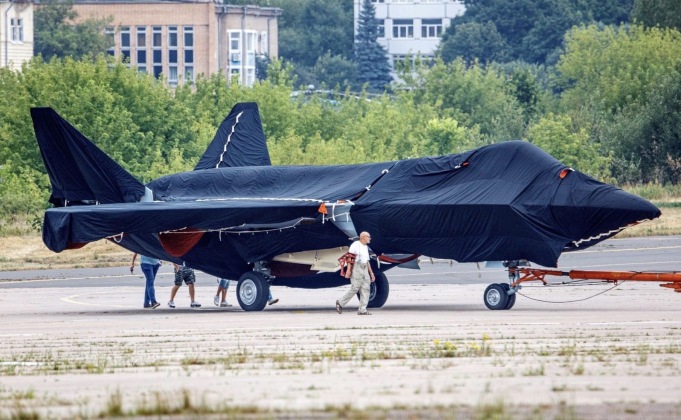
The F-16E/F remains among the most capable fighters in the Middle East, and is set to be supplemented by 80 French Rafale F4s which are by many accounts the most capable European fighters ever produced. These integrate advanced Meteor air to air missiles and SCALP radar evading cruise missiles, and have far less restrictions on how they can be operated compared to American fighters. The UAE in 2022 also began to acquire Chinese L-15 fighter-trainers, which are considered likely the most capable aircraft of their kind in the world, and has increasingly relied on Chinese unmanned aircraft to build one of the region’s leading drone fleets. With UAE fighter classes all having low operational costs, the country’s pilots have among the highest training hours in the world, with its fleet of approximately 160 fighters maintaining high availability rates, its fighter fleet remains the most capable in the region other than those of Saudi Arabia and Israel. Abu Dhabi in the late 2010s was also confirmed to have begun financing a joint fifth generation fighter program with Russia, which has been reported by multiple sources to have resulted in the development of the Russian S-75 Checkmate fighter as a rival to the American F-35. UAE Checkmate acquisitions remain a significant possibility by the early 2030s, with Abu Dhabi having shown a strong interest in Russian fighters in the past, most notably the Su-37 in the 1990s, before Western pressure played a key role at the time in preventing such acquisitions.

Turkey
The Turkish Air Force built up a formidable combat aviation fleet during the Cold War with considerable American support, with Ankara aligning its policy closely with Western Bloc interests over issues ranging from its personnel contributions to the Korean War to its planning of joint offensives with the U.S. against Syria in the 1950s. Turkey as a result gained permission to license produce F-16 fighters, and today represents the class’ leading operator outside the United States with an estimated 260 of the aircraft in service. These represent effectively its entire manned combat aviation strength other than a single unit of Vietnam War era F-4s. Not only is the F-16 a lower end lighter, but none of those Turkish service are from modern production blocks and all use effectively obsolete mechanically scanned array radars rather than phased array radars. This leaves the Turkish fleet at a distinct qualitative disadvantage against the top fighters of most of its neighbours, from Russian Su-35s and Syrian MiG-29SMTs to Greek Rafales. Turkey has struggled to phase even its F-4s out of service, let alone its F-16s, due to its eviction from the U.S.-led F-35 program, with Washington proving highly reluctant to make further deliveries even of additional F-16s. Turkey’s F-16 fleet is further disadvantaged by the very limited range of munitions it has access to with AIM-120C air to air missiles fielded in very small numbers, and older AIM-120B and AIM-7 missiles considered effectively obsolete. Its air to surface arsenal is similarly underwhelming.
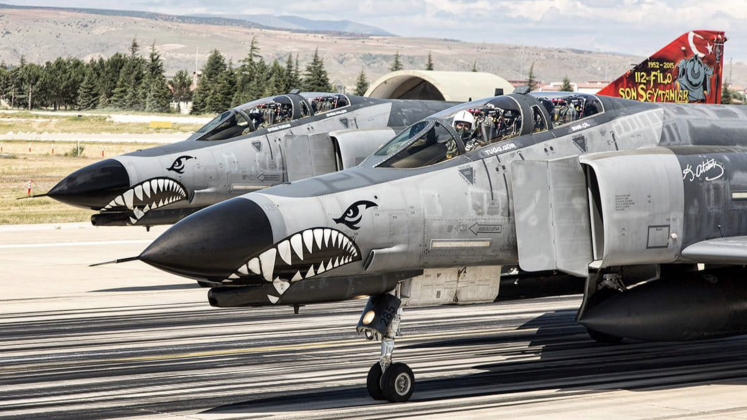
The Turkish Air Force has seen its capabilities seriously further eroded by mistrust from the political leadership, which was only exacerbated by the refusal of the officers commanding all but one fighter unit to provide support to the civilian government during an attempted coup attempt in 2016. The subsequent jailing of much of the officer corps further seriously undermined the fleet’s capabilities. Although Turkish drones were initially hailed across media outlets in allied Western states as wonder weapons which could turn the tide of the war in Ukraine, with Ankara providing the Ukrainian Armed Forces with significant quantities for its war effort against Russia, the capabilities of the aircraft quickly proved underwhelming and had little impact on the course of the war effort. Turkish drones had two years prior similarly proven to have an underwhelming effect when used against Syrian forces during Turkish offensives into Northeastern Syria to provide cover to jihadist militant groups fighting the local government there. With the Turkish fleet increasingly obsolete in its capabilities, and its foreign policy having undermined trust from the Western Bloc, from the majority of its Western and Eastern neighbours, and from China and Russia, its future acquisitions policies and ability to access new equipment remain highly uncertain. The country’s very limited domestic scale of research and development and small industrial base mean efforts to develop a competitive domestic fighter appear unlikely to materialise, with the TF-X fighter currently under development relying on American F110 engines from the 1970s and lacking a competitive electronics industry to support its development.












